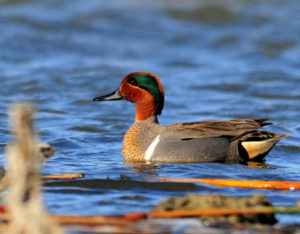For the first time in its 65-year history, the Waterfowl Breeding Population and Habitat Survey has been cancelled by the U.S. Fish and Wildlife Service (USFWS), Canadian Wildlife Service (CWS) and state partners due to COVID-19 restrictions.
[box] The Waterfowl Breeding Population and Habitat Survey is one of the most used and robust data sets that exists in North America. Officials will use long-term data to predict spring 2020 waterfowl abundance[/box]
The USFWS and CWS also cancelled participation in the American Woodcock Singing-ground Survey, Mid-continent Population Sandhill Crane Survey, and Arctic Goose Banding Program. The U.S. Geological Survey cancelled the North American Breeding Bird Survey, data from which is also important in monitoring bird abundance and regulating harvest of some species.

The May survey has been successfully completed every year since 1955 and its data used to estimate breeding population size and inform harvest management decisions for many waterfowl species.
Cancellation of these surveys will create a one-year gap in the record of waterfowl population estimates. The USFWS, in consultation with the Flyway Councils, will use long-term data from spring/summer monitoring for these species to make regulatory harvest management decisions.
“Decisions to cancel the May survey and other migratory bird monitoring this spring were based on our priority of protecting the health and safety of the American public, our partners and our employees,” said Ken Richkus, Chief of the USFWS Division of Migratory Bird Management.
Duck season regulations are based on the status of mallards in the Mississippi, Central and Pacific Flyways and on the status of four species (green-winged teal, common goldeneye, wood duck and ring-necked duck) in the Atlantic Flyway.
Because of recent changes in how harvest regulations are set, survey cancellations will not affect the 2020-21 hunting season. Proposed regulations for the 2020-21 season were based on population and habitat conditions from the 2019 breeding season and are making their way through the approval process.
For the 2021-2022 general duck seasons, Richkus said the USFWS will use the long-term data and models to predict 2020 spring abundances of ducks and habitat conditions in place of the spring 2020 data. The results from these predictions will be combined with the existing harvest strategies to determine appropriate levels of harvest for the 2021-2022 season.

Current travel restrictions in Canada, unless modified, may also affect many goose banding program efforts and surveys as well as high latitude duck banding stations this summer.
“These surveys are the bedrock of effective harvest management in North America and have helped sustain waterfowl populations and abundant hunting opportunities for over 60 years,” said Ducks Unlimited Chief Conservation Officer Karen Waldrop. “Although we will miss the anticipation and excitement that comes with the annual release of the May survey results, we don’t expect the cancellation of surveys to impact seasons and bag limits for the majority of species. The combination of healthy, robust waterfowl populations and our long-term experience with these data, gives us faith that the waterfowl management community can project populations with a high level of certainty.”
To get the latest info from the USFWS on the survey cancellation, click here. Be sure to follow DU’s newest Twitter feed – @DUNews1937 – to get the most up-to-date news from Ducks Unlimited.
Ducks Unlimited Inc. is the world‘s largest nonprofit organization dedicated to conserving North America’s continually disappearing waterfowl habitats. Established in 1937, Ducks Unlimited has conserved more than 14.5 million acres thanks to contributions from more than a million supporters across the continent. Guided by science and dedicated to program efficiency, DU works toward the vision of wetlands sufficient to fill the skies with waterfowl today, tomorrow and forever. For more information on our work, visit www.ducks.org.
About the cover photo: Pacific Black Brant at Izembek National Wildlife Refuge by Ryan Hagerty of USFWS – Izembek National Wildlife Refuge lies between the highly productive waters of the Bering Sea and the Gulf of Alaska. Within the heart of the Refuge is Izembek Lagoon, a 30-mile long and 5-mile wide coastal ecosystem that contains one of the world’s largest eelgrass (Zostera marina) beds. More than 200 species of wildlife and nine species of fish can be found on the Refuge. Millions of migratory waterfowl and shorebirds find food and shelter in the coastal lagoons and freshwater wetlands on their way to and from their subarctic and arctic breeding grounds. This extraordinary abundance and diversity of waterfowl has attracted international attention. In 1986, Izembek National Wildlife Refuge and Izembek State Game Refuge, which encompasses the submerged land of Izembek Lagoon, was the first wetland area in the United States to be recognized as a Wetland of International Importance by the RAMSAR Convention. In 2001, Izembek Refuge was also designated as a Globally Important Bird Area by the American Bird Conservancy.



